Furi's intense, super-stylized boss fights evoke God Hand and Metal Gear Solid
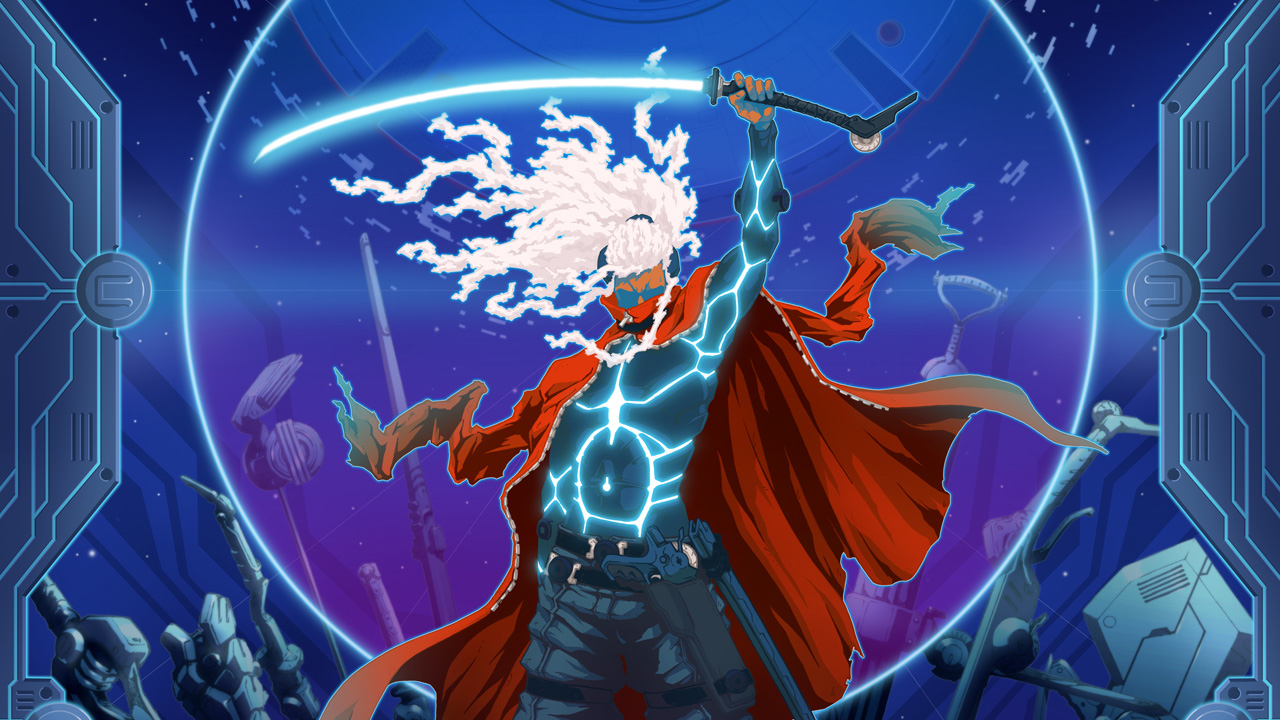
If you've ever strived to attain an elusive S-rank in a demandingly difficult action game, you need Furi in your life. This supremely stylish, arcade-style dueling game is in the same intensely engaging vein as some of the greatest action games of all time - Metal Gear Solid, Devil May Cry, No More Heroes, God Hand - specifically when it comes to boss fights. Testing your twitch reflexes and matching wits against a series of increasingly lethal oddballs is the name of the game in Furi, and it is oh-so glorious. After playing for a mere ten minutes, I was left feeling accomplished, hopped up on pure adrenaline, and desperate to jump into the full game.
Furi follows the desperate struggles of a white-haired swordsman, whose name is still a mystery. We first meet him while he's being tortured by a sadistic brute known as the Jailer, who has three Japanese Noh masks rotating where his face should be. When the Jailer's back is turned, our hero is somehow freed by a strange figure wearing a rabbit mascot mask, looking like a cross between Donnie Darko's Frank and Afro Samurai's Kuma. He gives you a sword, a plasma gun, and an order to kill the Jailer and attain freedom - and with that, you're hurled into the first one-on-one battle of many to come (provided you live long enough).
Though Furi revolves around a variety of boss fights, with seemingly zero 'minor' enemies in between, it's not preoccupied with bombastic setpiece battles against one gargantuan creature after another. This is about squaring off against someone your own size, using a simple set of tools - slash attacks, ranged blasts, dodging, and parrying - to overcome any adversary. "We want to make something that's different, and that captures a different kind of tension than being David vs. Goliath," says Furi's creative director Emeric Thoa, one of the co-founders of new indie studio The Game Bakers. "It's more [about] fighting someone who's relatable to you." Furi looks to be in the same league as those aforementioned action games, especially Metal Gear Solid and No More Heroes, which mastered the art of introducing visually inventive, fascinatingly unique characters for your next opponent, concisely conveying their backstory and motivations before throwing you into unforgettable fights to the death.
And let me tell you: these fights are sublime, all set to some pulse-quickening electro music. Every move you make feels immensely responsive and satisfying, and having just gorged myself on a mixture of Hyper Light Drifter and Dark Souls 3, I acclimated to the control scheme and flow of combat almost instantly. The showdown with the Jailer starts off at a distance, so I darted around incoming shots with the left stick while using the right stick to blast him with laser bursts, just like any twin-stick shooter. But once I had chipped away at his defenses and a visual cue told me it was time to deal some real damage, I dashed into melee combat range, and the top-down camera swiveled in for a close-up look at the heated clash. What followed was a series of pinpoint-timing parries with the Circle button, with successful deflections restoring your health, ensuring that you can always come back from a rough start. A spot-on sequence of parries opened up a window of timing for some flashy sword strikes, all mapped to Square so that you don't have to worry about memorizing or unlocking huge combo strings.
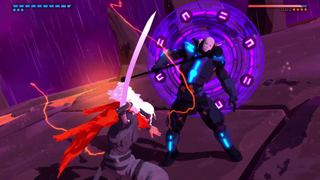
Thoa emphasizes that the entire control scheme is designed to keep you focused on the basic fundamentals of combat, almost like learning how to play basic notes on an instrument before you jump into actual music. "Execution is one thing, but it's not everything," he says. Keeping your offensive options restrained lets you devote your attention to the boss' many attack patterns; that said, you can charge up your sword and gun for heavier attacks, or hold down X to dash further distances (necessary for dodging the more severe bullet patterns that start flying your way once you've whittled down the Jailer's health). Furi's dedication to simple mechanics serving as the foundation for deep, complex encounters feels like a decidedly Japanese design sensibility, which - wouldn't ya know it - also happens to be the birthplace of Devil May Cry, God Hand, et al.
That sense of Japanese style is also immediately apparent in the character designs themselves, all of which sprung from the mind of Takashi Okazaki, the manga artist best known for creating Afro Samurai. And don't worry - you won't just slice up these cool characters in quick succession like a boss fight assembly line. In between skirmishes, you're given the chance to cool off and regain your nerves, calmly walking towards the next fight while your rabbit-masked acquaintance explains who you're about to fight, and what they're fighting for. I was also entranced by Furi's subtle world-building, from a brief glimpse at the surreal setting (a tower of islands floating in space high above a lush planet, evoking memories of Asura's Wrath), to the persona-developing quips that the bosses blurt out during battle.
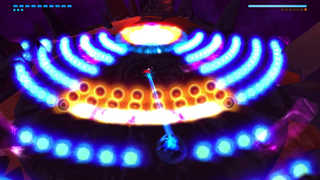
Everything that Furi is going for - a distinctly cool style, gameplay that's easy to learn and tough to master, and a boss fights that play up personality just as much as unique battle mechanics - speaks directly to my gaming sensibilities. And in classic fashion, Furi does indeed evaluate your performance all the way up to S-rank, with each rank unlocking a fragment of Okazaki's gorgeous concept art. Though this isn't likely to be a single-player game that takes dozens of hours to complete, part of the fun comes from diving back in on a harder difficulty (which introduces new attack patterns and timings to learn for each boss) or test your skills in a speedrun mode.
Sign up to the 12DOVE Newsletter
Weekly digests, tales from the communities you love, and more
Mercifully, I won't have to wait long to dive headfirst into Furi; it's debuting on the PS4 and PC later this summer. And what excites me the most is that Thoa understands the key to designing intensely difficult, yet ultimately rewarding boss battles. "It needs to be fair. When you get hit, you know why you got hit. You know it's your fault, because you didn't press a button at the right time, because you were too button-mashy, or you took too much risk," says Thoa. "So when you try again because you got a Game Over, you're motivated to progress. You're never angry at the game; you think 'I can do better!' and not 'What? Why did I die there?' [Players should] always think 'Just one more try. I can do it. I know why I failed, so now I can do it.'"
Lucas Sullivan is the former US Managing Editor of 12DOVE. Lucas spent seven years working for GR, starting as an Associate Editor in 2012 before climbing the ranks. He left us in 2019 to pursue a career path on the other side of the fence, joining 2K Games as a Global Content Manager. Lucas doesn't get to write about games like Borderlands and Mafia anymore, but he does get to help make and market them.
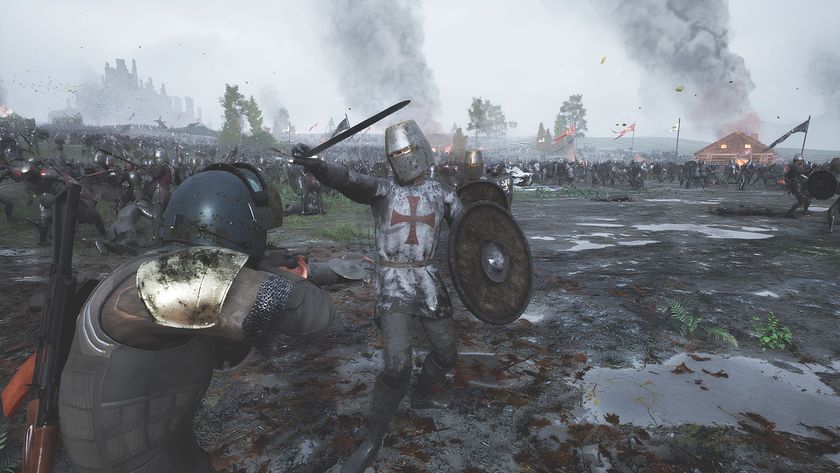
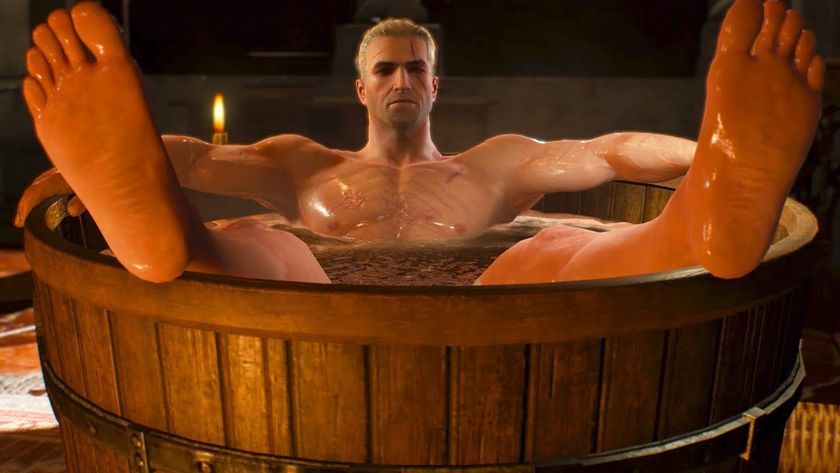
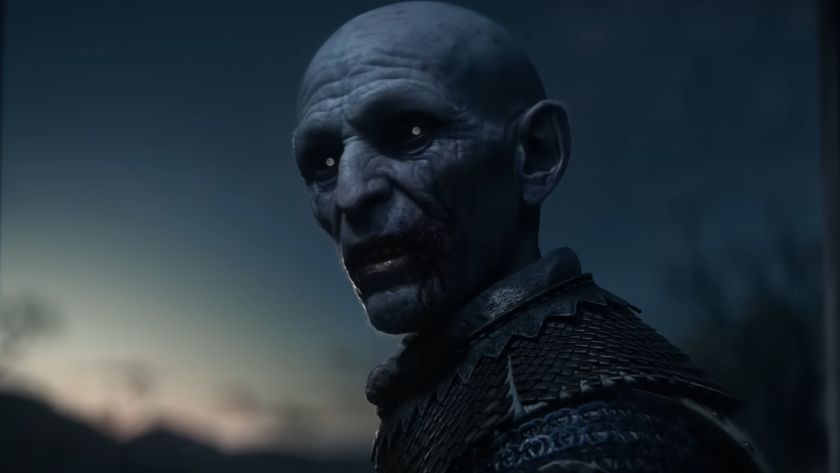
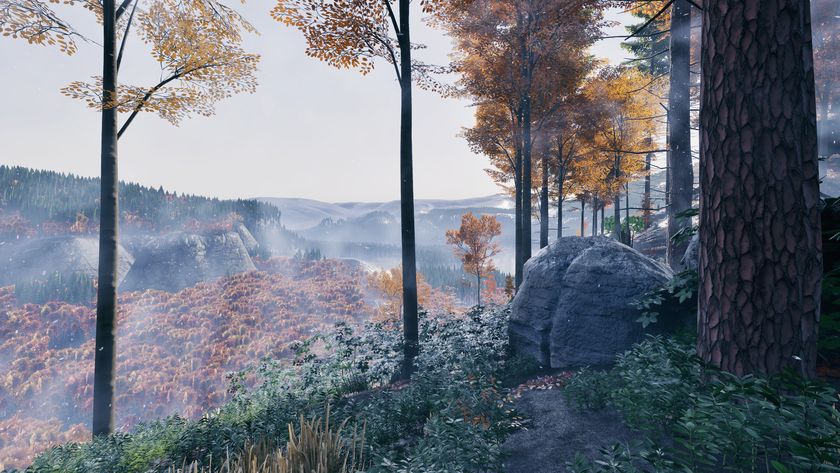

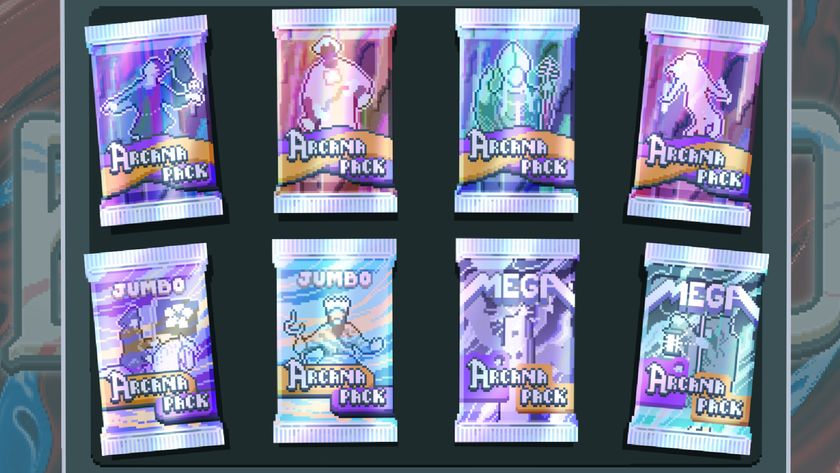







The Witcher 3 dev says his new vampire RPG Blood of Dawnwalker wants to challenge genre conventions, but only if "we're changing them to actually achieve some goal"

PUBG creator's wilderness survival game actually draws inspiration from an unexpected place - a whole raft of zombie games like DayZ, Project Zomboid, and Left 4 Dead




